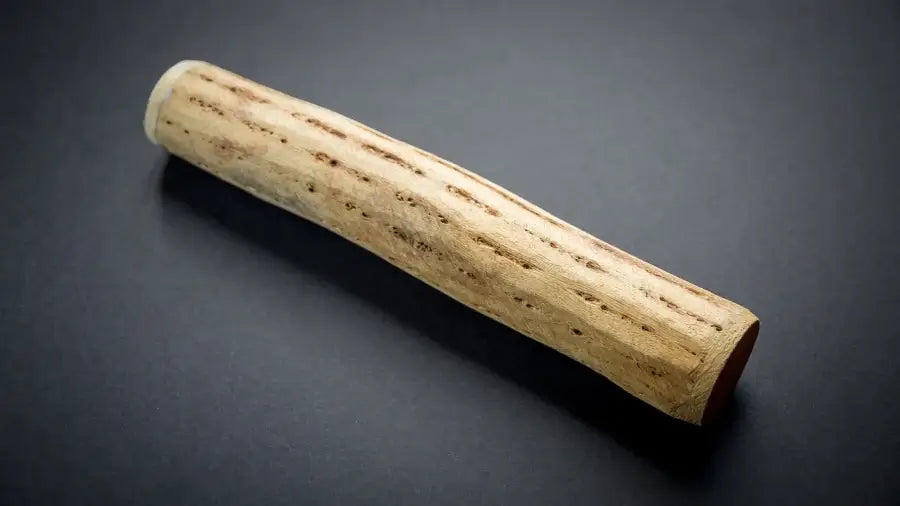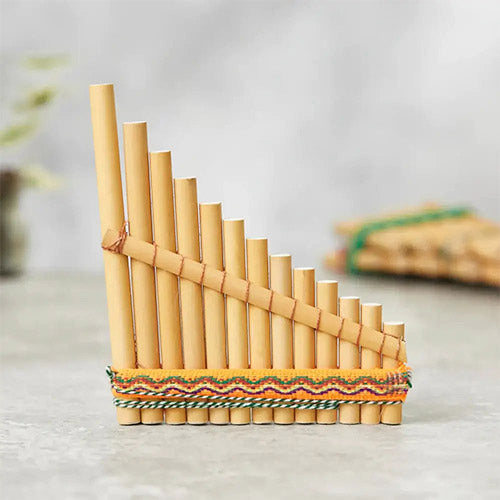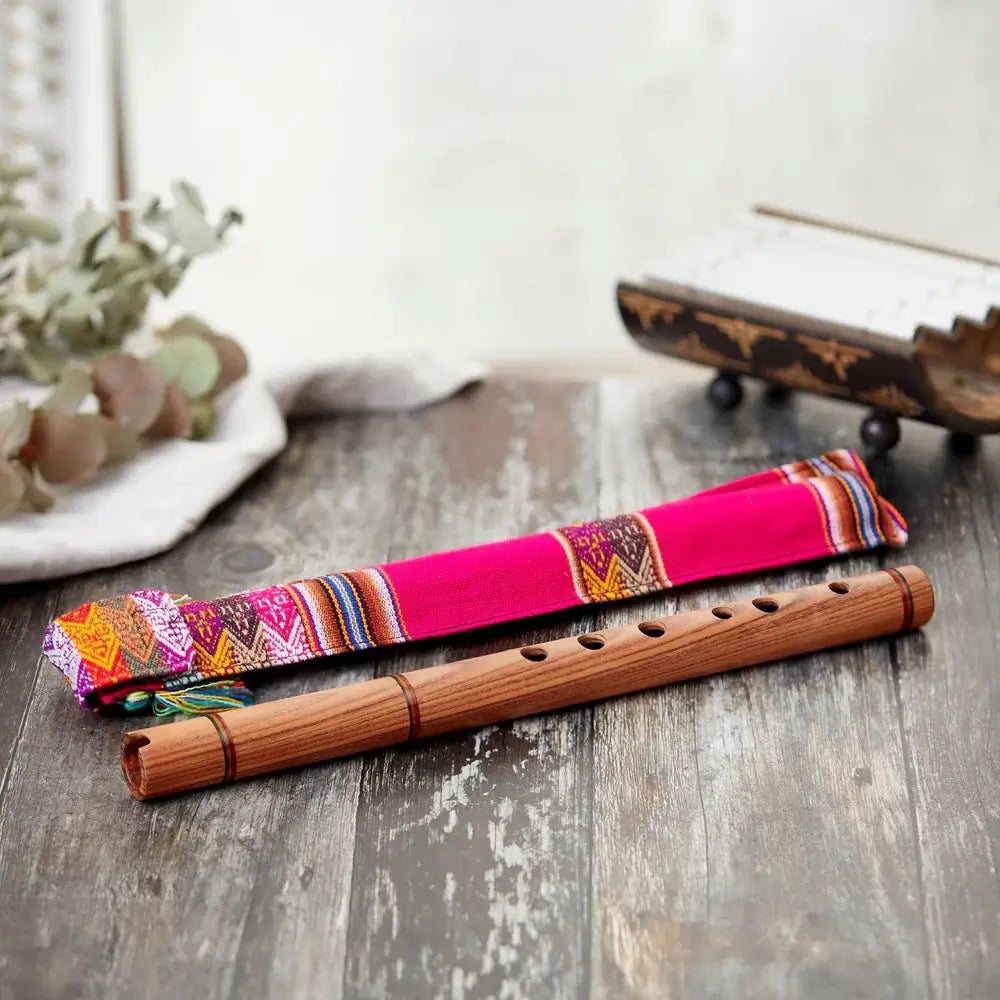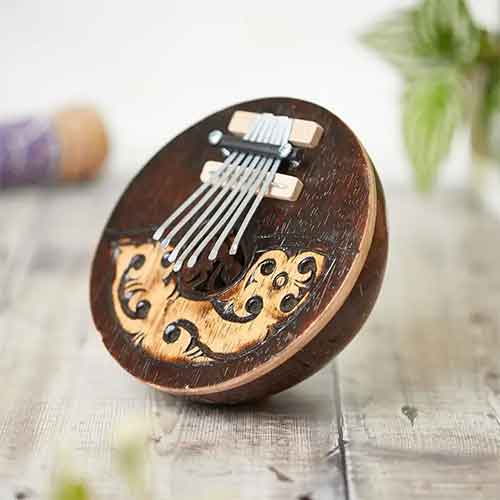The cactus rainstick gets its sound from needles that are spiked into the hollowed body and the pebbles that move in between those needles as they transfer from one side to the other. If you want to learn how to play the cactus rainstick you can read the guide below or alternatively watch the video where I show you in one minute how to do it.
1. Shake it as a shaker
The percussive rain maker shaker can be played in many ways, the first way is as a traditional shaker you can shake it to the beat: 1,2,3,4 and repeat.
2. Tilt it slowly from side to side
The official way to play it is by turning the rainstick from one side to another. This can be done fast to achieve a quick release or slowly for a sustained sound. The way that you will play it will depend on the use. For example, if you intend to play the rainstick as a music therapist helping your clients relax, you would want to play it slowly whereas if you was taking part in a musical ritual to 'make it rain' you may have a different approach.
The natural South American percussive musical instrument has an unusual soothing sound that is useful for sound healing as part of a therapy with a sound therapist. It can also be used for mindfulness, meditation, to enhance yoga promoting deep relaxation. This is one of many relaxing percussion instruments that we have in our store.
History of the Rainstick
The rainstick has a long history dating back thousands of years, originating from indigenous cultures in regions like South America and Africa. These cultures used hollow cacti, bamboo, or wood filled with small pebbles or seeds to create the sound of rain falling. The rainstick was often used in ceremonial rituals, believed to summon rain or invoke spiritual blessings. Over time, the rainstick spread to various cultures and became popular worldwide as a musical instrument and a symbol of cultural heritage. Today, it is commonly used in music therapy, ASMR, relaxation practices, and as a decorative item.
Rainstick (Sound Demonstration)
Where to buy Cactus Rainstick?
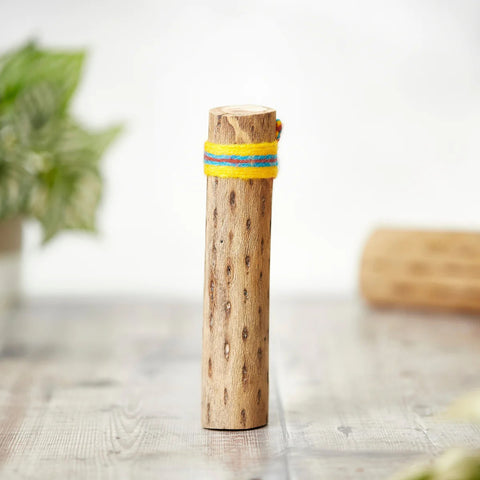
The Cactus Rainstick is a natural Chilean cactus shaker, perfect for children to enjoy and explore music. Its soothing sound of trickling rain engages children while aiding in their social, rhythmic, and memory development. Made from sustainable materials, it's durable and sealed tightly for safety. Additionally, it's suitable for musicians and serves as a relaxing gift, finished with a colorful woven band. You can buy the Cactus Rainstick here.
Cactus rainstick: Frequently asked questions
What is a cactus rainstick and where did it originate?
The cactus rainstick originated in Chile and Peru and is traditionally made from the cactus plant. It is a hollow cylinder filled with small pebbles, beads, or seeds that is sealed at both ends with a cactus spine or a cap.
What does the cactus rainstick symbolise?
It is believed to symbolise the sound of the rain falling from the sky. It is thought to bring good luck and to bring positive energy to the environment. The cactus rainstick has also been used in music, as it is an interesting and unique instrument that can add texture and atmosphere to a song.
What are different types of rainstick?
Rainstick can be made from many different materials, however the two most popular types are those made from either bamboo that has been sealed at the ends or natural chilean cactus rainstick.
What size rainstick do we sell?
Whilst the small 15cm rainstick is the first one that we sold, they do come in many different sizes and now we have them for sale in different lengths. The next size up is the 25cm rainstick, this instrument has a longer sustained rain sound, and if you feel like doubling up with a more powerful sound you can go with the 50cm. for the best sound that has the longest sustain and amplification go with the 100cm.
What is our most popular rainstick?
We have many different types of rainstick, those made from natural cactus and even bamboo with sizes that vary from 10cm-100cm.
Can you make a DIY rainstick?
Yes. Making a simple handmade rain stick involves putting nails or toothpicks through a cardboard tube, filling it with rice, sand, or beans, and sealing both ends. For a child-friendly version, you can use coiled aluminum foil instead.
Up next: 50+ Unusual Musical Instruments

